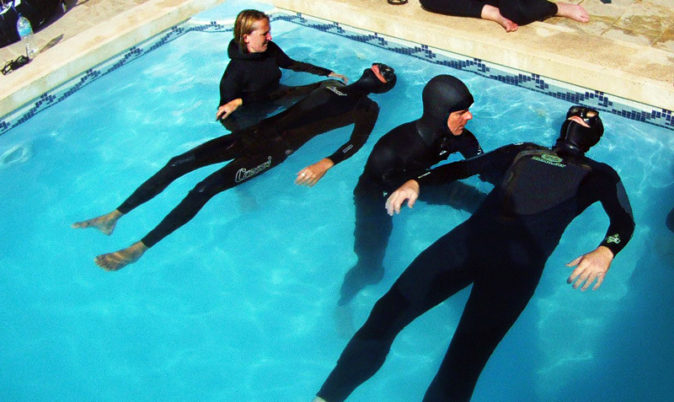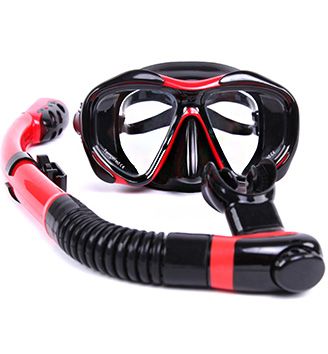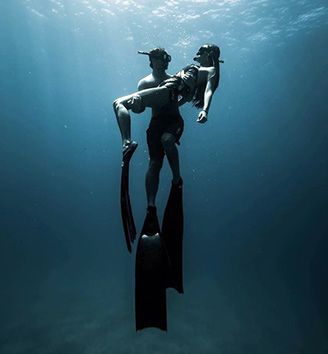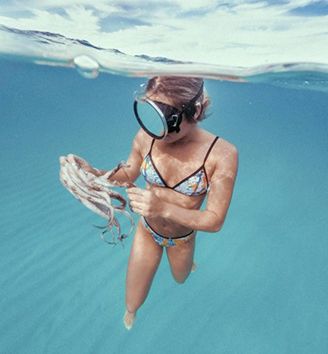In 2018, the Croatian Budimir Shobat (Budimir Shobat) set the world record for holding one’s breath underwater in the discipline of static apnea at 24 minutes and 11 seconds. The previous record was surpassed by 8 seconds, making this an extraordinary achievement.
 The 2018 world record for breath-holding. Budimir Shobat dedicated his achievement to people with autism spectrum disorders.
The 2018 world record for breath-holding. Budimir Shobat dedicated his achievement to people with autism spectrum disorders.
On February 28, 2016, the world record stood at 24 minutes and 3 seconds, achieved by Spanish freediver Aleix Segura. In 2014, Goran Čolak held his breath for 23 minutes and 1 second. It’s important to note that achieving a breath-holding duration of 20 minutes or more is only possible with pre-breathing pure oxygen, but this is allowed under the rules for measuring static apnea.
A video from Guinness World Records documented the 2016 world record in prolonged apnea with the use of pre-breathing 100% oxygen. The record-holder is Spaniard Aleix Segura.
What Is the Secret to Prolonged Breath-Holding? Superhuman Abilities, Practice, or Meditation?
To achieve such mastery, specific techniques and physiological principles come into play. Understanding these and working diligently can help one gradually progress toward record-breaking feats. So, how is it done?
Breathing Physiology in Achieving Records
Breath-holding involves oxygen deprivation. This is the first thing to keep in mind when starting freediving training. Weigh the risks and set your priorities; to do so, it’s important to understand the basics of breathing physiology.
What Happens to the Body During a Dive?
During a dive, physical activity quickly consumes oxygen, leading to hypoxia (oxygen deficiency). Calculating the oxygen loss rate is complex and individual, as it depends on depth, speed, dive duration, water temperature, heart rate, and the diver’s lung capacity.
A helpful illustrative example in this video shows what happens to a diver’s lungs during a dive:
Every organ in a diver’s body responds to even the slightest changes in pressure. Blood vessels constrict, blood flow redistributes, and blood pressure delivers oxygen to the most vital organs — the heart and brain. Remarkably, the heart rate begins to slow as soon as only the face is submerged in water!
However, the most intriguing part begins when the central nervous system signals it’s time to breathe. This feeling is familiar to everyone — the concentration of carbon dioxide reaches a critical level, and we instinctively breathe in. A trained diver knows how to control this reflex to some extent. When it comes to a small pool demonstration of breath-holding, rather than an underwater dive such as for spear fishing, the discussion about gas pressure changes in the body is not relevant. However, during active movement underwater at depths of 8–10 meters, there’s a real risk of blacking out during ascent.
Why Can Loss of Consciousness Occur While Surfacing?
To put it simply: pressure during a dive compresses the lungs, making it seem that there is still enough oxygen. As the diver ascends, the pressure decreases, and the lungs require a larger volume of air with each meter of ascent. The lungs compensate for the lack of oxygen by drawing it from tissues and organs, which dramatically increases the concentration of carbon dioxide. CO2 is toxic and particularly risky because consciousness fades without much warning — rapid and active ascent to the surface exacerbates the situation with each passing second. To avoid being caught off guard by hypoxia, safe diving must be learned.
Before beginning exercises for breath-holding and lung volume expansion, a novice diver must learn to interpret their body’s signals correctly and assess their sensations accurately. To understand how to start your first training sessions, read this article.
Symptoms of Oxygen Deprivation and Carbon Dioxide Toxicity:
- The early signs of elevated CO2 concentration include mild euphoria, tingling in the fingertips, goosebumps, a slight increase in body temperature (as after a cup of hot tea), a headache, and slight nausea.
- Pulsation of blood vessels in the brain, “tunnel vision,” and a pre-syncope state. Cramps and loss of consciousness.
- The so-called “nitrogen narcosis,” during which irreversible consequences may occur. These symptoms develop very quickly. For a novice diver actively moving underwater, it can all be over in just a couple of minutes. Even a trained pearl diver cannot hold their breath for more than 8 minutes.
How to Learn Prolonged Breath-Holding?
To reduce the sensitivity of receptors to carbon dioxide and set records in static apnea, regular training is essential. An experienced diver uses over 50% of their oxygen supply—this is the oxygen consumption threshold before the mandatory reflex inhale of an average person.
There are two different approaches to increasing apnea duration:
- Various training systems aimed at developing proper breathing, self-control and relaxation, increasing lung capacity, and diaphragm training. Some techniques are based on pranayama, plavita-sadhana, Kundalini yoga, and other meditative practices. There is a separate article on yoga for freedivers .
- Controlled hyperventilation or inhalation of pure oxygen.
Techniques and training schemes for breath-holding, concentration, muscle relaxation, and hyperventilation are discussed in detail in the article How Freedivers Train .
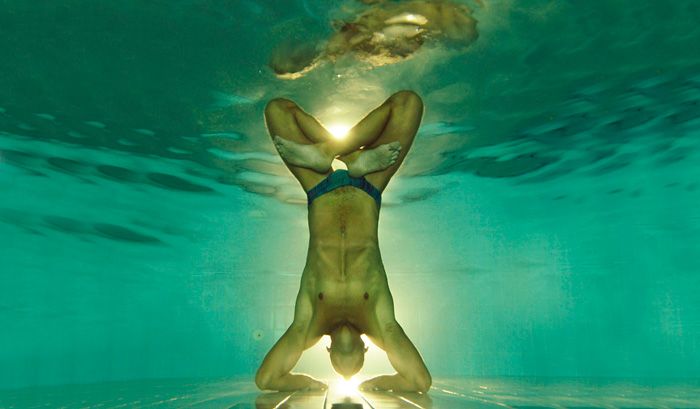 yoga exercises for increasing lung capacity
yoga exercises for increasing lung capacity
Despite having side effects, hyperventilation is the most popular and effective method to extend apnea. It is the practice of fast breathing, which reduces carbon dioxide levels before diving. Practicing rapid deep breathing can double apnea time, but the more intense and prolonged the hyperventilation, the sharper the hypoxia during ascent. Some instructors consider this apnea extension practice dangerous and not effective enough to justify the risks.
How Long Should Hyperventilation Last Before Freediving?
A normal range is considered to be between 30 and 60 seconds. Beyond one minute, hyperventilation reduces a diver’s control over oxygen deprivation and significantly increases the likelihood of cramping. This has been tested academically and practically hundreds of times, so exceeding the time for forced lung ventilation is not advisable. The majority of tasks should and can be entrusted to a freediving computer .
There is a widely accepted test for optimal hyperventilation duration, developed by a medical commission specialist from the World Confederation of Underwater Activities (CMAS), R. Charli. A trainer or physician discusses, in detail, the symptoms under which the diver will signal the first stage of oxygen deprivation. Several hyperventilation approaches are performed (at different times, with varying breathing frequency and depth), and the first symptom is timed with a stopwatch. The recorded time is divided by three—this will be the acceptable time for preliminary lung ventilation.
The main rule for achieving records is not to dive in headfirst. Do not set unfeasible goals without calculating the risks. Life and health are more important than any achievement!
